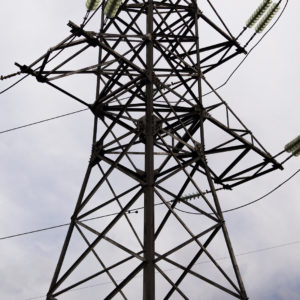Contrary to public opinion, some dreams don’t die with one stroke of the pen but are the result of many small decisions that seem to make sense in the moment.
Legislators need to act boldly to assure stability for long range planning in the electric power industry, or Californians will pay a very high price indeed.
With the September California legislative session wrapped up, it looks as if utilities will be able to access the capital markets to cover extensive fire damages and remain financially workable. In other words: The California utility industry, though threatened by wildfires, remains standing. But dense smoke fogs the investment horizon, and that’s the real problem.
Details about how much of the damages will ultimately be absorbed by shareholders is yet unknown. Little doubt remains that the number will be substantial. Wildfires, in 2017 alone, left an estimated $9.5 billion in insurance claims in Northern California, and an additional $2.1 billion in Southern California. How long it takes for the California legislature to substantively address the long-term problem and, ultimately, how it chooses to address the damages for 2017, this year and in future years, will have a very real effect on the shape of that state’s utility industry for decades to come.
One thing is for sure; the uncertainty in contending with these charges makes it ever more difficult to plan for long-term investing; so much so that the delay may well threaten the dream of shifting to renewable energy sources by 2045. The political drama over who pays may make great television, but it directly undermines the stability needed for long-range planning no matter what the outcome.
The whole dilemma over who bears the costs can be explained easily enough. California law sports a tough interpretation of something called inverse condemnation, which in practice makes it easy to force corporations to pay for damages from events like forest fires, even if the company is not at fault. But there’s a limit to how much loss even the biggest corporations can bear.
PG&E, deemed to have started 14 of the 16 Northern California fires in 2017, suspended its dividend and reserved $2.5 billion by the second quarter of 2018 for estimated charges. A stock that once traded at $70 now hovers around $45.
“Yesterday’s loss won’t help our state deal with the impact of tomorrow’s wildfires,” said Geisha Williams, chief executive officer and president of PG&E, on a July 26 earnings call. The CEO complained, remarking on what she declared was the basic unfairness of inverse condemnation, “The strict liability contract that is applied to investor-owned utilities in California today, is unsustainable and is already having very real consequences.”
Inverse condemnation works like this: In the extreme, if a drunk driver swerves off road and hits a utility pole, which falls and starts a fire, or if a piece of utility equipment even starts or worsens a California blaze, the utility shoulders the damages, regardless of fault. If a utility is truly at fault, because of poor maintenance or negligence, the company should indeed be held liable for the damages, but to operate with strict liability regardless of fault means that higher costs loom in the background for every major California utility.
These costs will ultimately be borne by Californians — hitting the poor the hardest of all because they spend a higher proportion of their income on basics like energy. “We find ourselves in this climate … facing wildfire after wildfire,” said Williams. “The numbers that we’re seeing already in California and in the Western United States (are) staggering. … This is going to be a perennial issue.”
The increased costs stemming from the policy of inverse condemnation still pose a risk. The uncertainty of a disaster imposing huge costs in any given year will certainly affect the utilities’ ability to plan for the long term. In the extreme case, these costs may affect a utility’s ability to convert to 100 percent renewable energy, thereby unintentionally quashing one of California’s energy dreams.
Investors look to utilities to provide them with stability and safety in their retirement years. Strict liability unfortunately detracts from that stability. Until there’s a legislative fix to inverse condemnation, California utility stocks will remain problematic.

